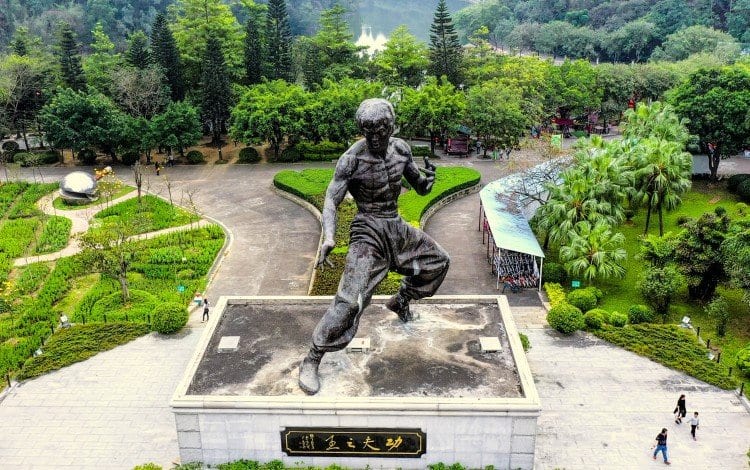
Editor's Note: This week, we will be publishing excerpts from The Bruce Lee Code (Career Press), a new book from TheStreet writer/editor Thomas Lee. The book examines how Lee's life and words can inspire entrepreneurs and career-minded professionals. The Bruce Lee Code, which launches April 3, is available to purchase here.
Bruce Lee died in 1973. But five decades later, he remains as relevant as ever.
Perhaps more so.
You can find him on T-shirts worn by characters in films ranging from Superbad and Step Brothers to Avengers: Age of Ultron. A picture of him turns up on a wall in a scene from Seinfield, and footage from his films appears in a fight sequence in the movie Limitless. You can see his influence on NBA star Steph Curry’s yellow-and-black sneakers.
He looms large in the music of groups like hip- hop legend Wu Tang Clan and K-pop superstar BTS. Whenever you play Mortal Kombat or Street Fighter on your XBox, Nintendo, or PlayStation, you can thank Bruce Lee. Whether in high-brow fare like Crouching Tiger, Hidden Dragon or mass entertainment like Star Wars, Bruce Lee looms large.
When developing his films, his television shows, his martial arts schools, and his JKD philosophy, Bruce Lee always thought carefully about his brand — which makes perfect sense, since he took such a hands-on approach to his projects.
The word “Dragon” in the titles of the films Way of the Dragon and Enter the Dragon refers, not to a character or plot point in the story, but rather to Lee’s nickname. To Lee, the movies were personal statements that signaled his emergence as a major movie star. Can you imagine any movie star today being able to name a movie after himself or herself?
Building an enduring brand
After Lee completed Enter the Dragon, he instructed his lawyer to start exploring merchandising opportunities, referring to possible deals with animation studio Hanna Barbera and Warner Brothers.
“Also, I would like to meet with you first before meeting with Raymond Chow and then both of us will hear him out,” Lee wrote. “By the way, there are also propositions of books, clothing, endorsements, etc.”
One of the most amazing things about Bruce Lee is that he built his brand from nothing. Recall the teenager who, newly arrived in the United States, began telling anyone who would listen how he wanted to do big things, although the odds of him actually accomplishing them were discouragingly low, especially at a time when America was so racially polarized.
“He wasn’t afraid to put himself out there,” said tech entrepreneur Ruben Dua. “He wanted to take martial arts and find a new audience and find his own media.”
Sheer force of will
Today, almost anyone can become rich and famous by cultivating personal brands on social media platforms. But the Internet did not exist in Lee’s lifetime. He became a superstar by sheer force of will.
Asked to imagine what might have been if Bruce Lee had had access to the social media platforms available today, Steve Cadigan, a former top executive at LinkedIn exclaimed:
“Oh my God, his audience and followers would be off the charts. I mean, he’d be everywhere. He had charisma. He had the X-factor. He had something that, even today, lives on during an era of short attention spans and sugar-high entertainment.”







